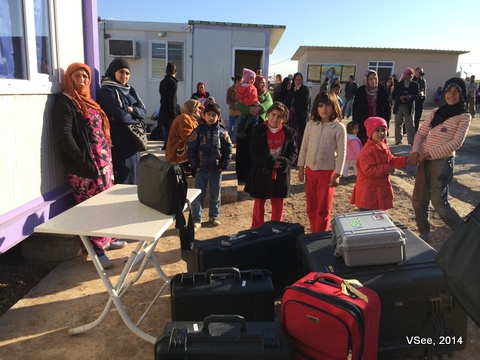
Syrian refugee camp patients waiting to be seen as we unload our equipment.
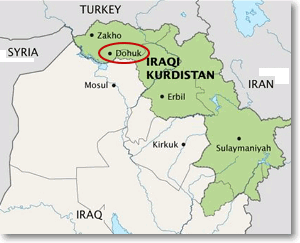
Duhok (Dohuk or Dahuk) is about an hour from the Turkish border of Iraqi Kurdistan
We hit the ground running on day two of the medical outreach, following the medical training symposium on Sunday. The medical outreach team (consisting of 3 Ear, Nose, Throat surgeons – Dr. Marc Dean, Dr. Michael E. Glasscock, Dr. Frederick J. Stucker, a transplant surgeon – Dr. Gazi B. Zibari, an abdominal surgeon – Dr. John Thomas, a nurse practitioner/PhD candidate – Julie Daugherty. a biomedical engineer – Brian Spearman, and of course, the VSee telemedicine deployment team – Milton and myself) arrived at the Syrian refugee camp of Domiz just outside Duhok at 8 a.m. with all our equipment and medicine. A long line of refugee patients were already waiting to receive medical attention from us. We immediately got to work seeing and operating on patients without lunch or bathroom breaks until 3 p.m. when the power generator finally gave out completely after stopping intermittently throughout the morning. This was the only reason we stopped seeing patients. We had to ask the rest of the waiting patients to come see us at the Azadi hospital the next day.
The Syrian Refugee Camp of Duhok

Syrian refugee camp tents – concrete base and soft roof
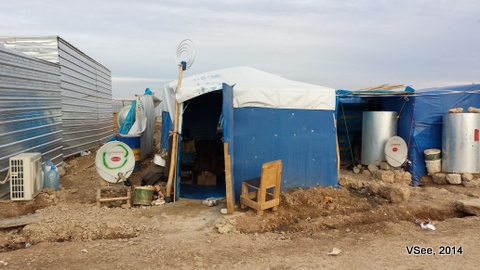

The Domiz refugee camp medical clinic
Below is a tiny cabin we were given to set up our temporary operating room (OR) and telemedicine eye clinic. We squeezed the telemedicine station to the right side of the room and an operating table with microscope and all the surgical instruments to the left. This way we could simultaneously operate on the ear, nose, throat (ENT) patients while doing telemedicine eye examinations, allowing us to serve more patients.
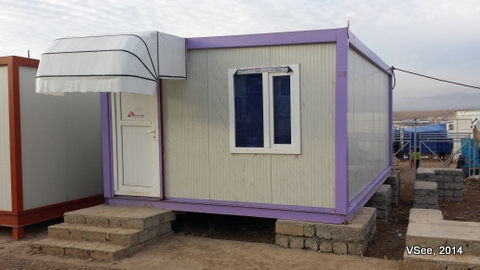
The room given us to set up our temporary operating room and mobile eye clinic

Setting up for surgery and remote eye exams
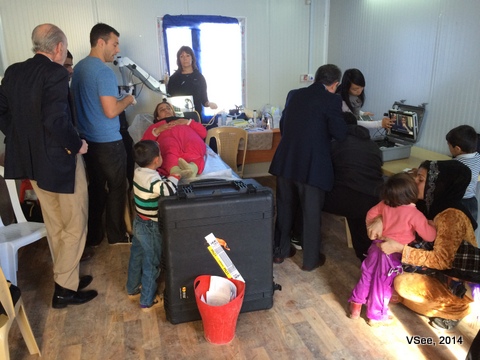
Crowded clinic – ENT surgeries to the left; telemedicine eye exams to the right
Remote Eye Clinic via VSee Telemedicine Case

We were very lucky to have an amazing ophthalmologist from Panama, Dr. Raul Chanis, as our team’s remote ophthalmologist. It was 2:30 am in Panama when the mobile clinic was set up, and he was able start tele-ophthalmology examinations of the Syrian refugees. He saw 28 patients via VSee telemedicine kit with Dr. Gazi Zibari translating before the telemedicine clinic ended. He then went on with his regular work day after a quick 1-hour nap!
Dr. Chanis was fantastic with the patients and also with directing non-medical personnel. He was so intuitive and good at observing details that we felt like he was right there in person doing the diagnoses. Even with all the noise from the ENT patient interviews, crying babies, etc., Dr. Chanis didn’t miss a thing while communicating with patients–he could tell right away that a patient’s eye was protruding just by briefly talking with her over video.
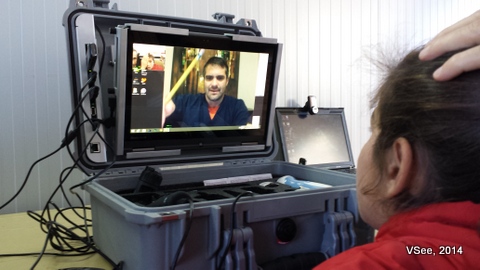
In the remote eye examination pictured above, he is asking the little girl to follow his pencil with her eyes. He can see that the girl’s head is tilted towards right side so he suspects that her left eye has a problem. He then has us examine her with the iris scope, which shows that the girl’s pupil is not centered, followed by an examination with the ophthalmoscope (a new addition to the VSee telemedicine kit) to check her pupil.
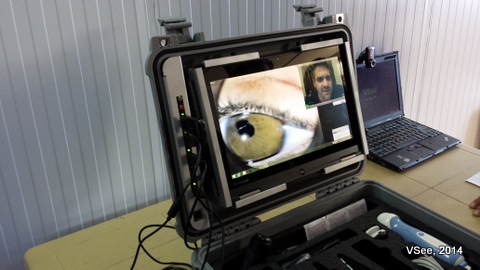
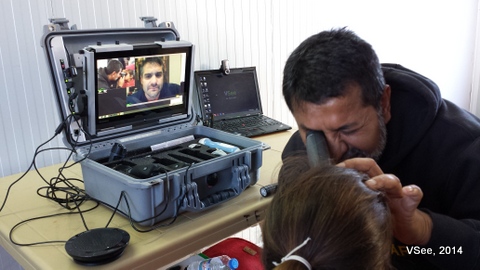
He sees a small white cloud which could potentially be a tumor inside the girl’s eye. If it does turn out to be a tumor, catching the problem this early could mean saving her life even though she may still lose the eye. We referred her to the local hospital where she will be taken this week to verify the cloudy spot – hopefully the findings will be benign. (Please note that all medical services for the refugees are provided free by the Kurdish government.)
Why Telemedicine?
The beauty of telemedicine is that it allows for triaging cases right here in the local community. This helps control the number of minor cases crowding the local hospital, freeing up more appointments for urgent and serious cases. It’s also more convenient for patients who then don’t need to travel so far.
Special thanks to our collaborating sponsors Operation Hope (OH), World Surgical Foundation (WSF), American Hepato-Pancreato-Biliary Association (AHPBA), The American Kurdish Medical Group (AKMG), Otorhinologic Research Institute (ORI), the Prime Minister of Iraq and Director of General Health for supporting this medical outreach trip to bring telemedicine and tele-education technologies to the developing world.
Also check out how we streamed live surgeries from the Azadi Teaching Hospital in Duhok and the rest of our telemedicine trip to Iraqi Kurdistan.
Learn more about VSee Telemedicine here.






very good demonstration of telemedicine. we hope this report esteblished the utility of telemedicine amoung doctors and users.